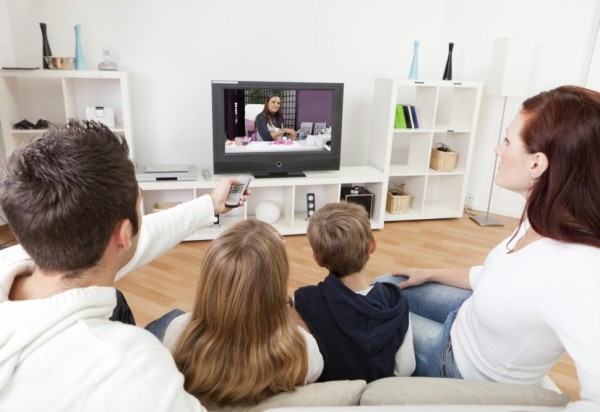
Direct Response Television (DRTV) has been changing just like other advertising methods. In fact, advertisers are starting to take notice again. Long-form DRTV ad campaigns have experienced a year-long increase in revenue. Q3 2015 results showed a rise of 5.5% in the US. Advertising pioneer David Ogilvy mentioned years ago that “Direct response is his secret weapon.” We completely agree with him.
However, there is still a slight difference between DRTV advertisements that are well put together and strategically planned and those that just have dropped a call to action in the ad. Both are directed to engage the audience, but first does it slightly better.
What are the secrets of creating a captivating direct response ad that actually makes people immediately respond to it?
1. Find a media agency and an accurate analytics platform
To create a successful DRTV advertising campaign, it’s essential to find the right agencies that have experience in DRTV. A skilled media planning and buying agency can effectively purchase TV spots from the right channels. The agency will adjust the campaign based on the results and data collected. However, to maximize the agency’s efforts, it’s important to supplement it with more precise data. This is where a reliable TV analytics platform becomes useful. TV analytics platforms offer actionable data that the media agency can use for more accurate decision-making. This is crucial for placing and buying TV spots that align with the advertiser’s business goals.
Make sure you know how the agency is measuring ROI and efficiency of your TV ads, so you will have a clear picture of what you’re investing in. 46% of marketers were concerned about their media buys. You don’t have to be one of them if you pick the right agency with proper experience in using right analytics tools and emphasis on clear communication.
2. Create a compelling media strategy
When you’ve found a trustworthy agency, the next step lies in creating a media strategy. A common factor in marketing failure is not matching the budget with the right goals or creating the right plan. You need to plan your reach, channels, ROI and other factors before getting creative with the advertisement.
One of the biggest mistakes made when creating a DRTV media strategy has been the aspect of frequency. To get the best out of your DRTV ad, make sure you concentrate on the reach of your campaign instead of frequency. A research conducted by Thinkbox revealed that 80% of total response was generated after the consumer had seen the ad for the first or second time. DRTV has been mostly daytime-only campaign that performs better for frequency.
Instead of showing the ad more than once, the ad should be shown more on different channels. As many DRTV ads have been relying on the frequency rather than capacity, it is time to reconsider this strategy. However, reach itself should be targeted, since more extensive reach equals larger expenditures. Regardless, the placements of TV spots should rely on gathered data to guarantee the highest efficiency and reach the right audience.
3. Know your prospects
This one is pretty self-explanatory. Make sure you do your homework before airing your DRTV ad. A correctly targeted DRTV ad can create a bigger revenue stream.
One of the most important aspects you need to keep in mind is the second screen usage. For instance, 37% of TV audience in the US searched for a product that is shown in the advertisement. However, the second screen usage varies between different age groups, being the most popular amongst millennials and Gen X. If your campaign is targeted to millennials, the call-to-action in the ad should be in accordance with smartphones whereas the elderly prefer to use a tablet as the second screen. Therefore, the TV ad should be in accordance with the product website referred in the TV ad. Only 1 in 4 of the advertisers showed the product on their website and 1 in 6 presented it on the mobile site. This brings us closer to the problem that advertisers lose potential conversions to the lack of synchronization between an offline and online presence of the advertisements. When a TV-promoted product is targeted to the accurate audience, the conversion rate is known to increase 2 to 5 fold.
4. Use the help of different creatives
Predicting success of your DRTV campaign is not easy, but not impossible either. Once you’ve found your target group, it’s time to get creative. To make sure you have different options, hire more than one creative for your campaign. By testing, you will be able to choose the most effective campaign in driving conversions. Minor changes in the visual layout of the advertisement can have a profound effect on the outcome and ROI of your campaign. Luckily, DRTV is a medium that allows making changes easily in the campaign, so testing for the best outcome is crucial. There are two main aspects to take into account – the theme of the ad and the call-to-action.
iSpot.TV has brought out currently most engaging TV ads. Most of the ads in the top 10 were described by adjectives “funny” and “active” with an easy-to-remember tagline and featuring a URL or a hashtag as the call to action for a higher social engagement.
5. Get attention from the beginning
If you’re determined to reach your goals, the real trick is to capture prospects interest from the very beginning. The opening of a DRTV ad has to be captivating. According to Jane Maas and Kenneth Roman in “How to advertise”: “When it comes to advertisements, people can only get less interested. The level of interest you reach in the first 5 seconds is the highest you will get.” If you don’t get the attention of your prospects then, you will not get it at all. In order to get the wanted attention, the message in your campaign needs to be spot-on: clear, direct and attention getting. Make sure your message stands out, as there are thousands of advertisements aired every day.
6. Add an urgent call to action.
If you want people to respond to your ad, you need to add a call to action. Most TV ads work because of impulse and a good DRTV ad has to capture that impulse to push consumers to conversion. Different call to actions can vary from phone numbers we remember from the 90s to search engine keywords and hashtags that are more common nowadays. Some companies use unique URLs to track their TV campaigns, it can be done by changing the domain name or creating a unique URL. However, this doesn’t work because URLs are more difficult to remember and often search call to action is used instead.
According to a recent research by the Video Advertising Bureau, website visits and expenditures in call to action TV ads are in positive correlation. Make sure you target the right audience with a right call to action and you’ll receive great results. We have explained why should you integrate a call to action to your TV advertising campaign here.
7. Integration with digital mediums
Now you’ve added a call to action. Someone has responded to it. What’s next? You need to make sure your prospect will be pushed to the conversion in the digital stage. 28% of multitasking activities of the millennials were connected to TV. Moreover, people are more keen to use a tablet or a smartphone while surfing the web than ever before. In comparison to the year before, digital consumption rose 42% in 2014. DRTV is closely linked with digital – TV-specific search and display ads are now imperative to maximize DRTV results. For that reason already, you need to make sure your digital presence, social media channels, and landing page are captivating, so your prospects will be pushed to conversion. TV is just a good way to get prospects on top of the funnel. If you want the BEST results, you need to have both mediums working together immaculately.
DRTV advertising is apparently still going strong. While there are many aspects to consider in creating a captivating TV ad, there are specific features that need to be taken into account when creating a DRTV ad. If done properly, this will pay off in the end, as the measurability of the DRTV campaign will guarantee you the best ROI. Try out a free demo and find out how!
